This is a free fortnightly newsletter about the New Zealand Net.
If you would like to be notified by email when a new edition is published, please contact ZL1NZ.
Browse our Newsletter Archive and List of Net Tips.
Featured key
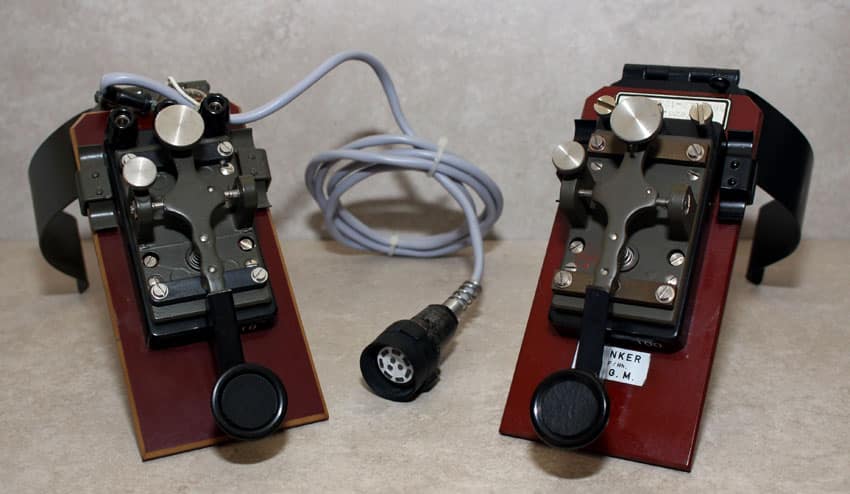
Junker mobile keys. Photo VK1KVS
 By Kees van der Spek VK1KVS
By Kees van der Spek VK1KVS
The Junker type M.T. key fitted to a leg-clip and intended for mobile use is known as the Junker M.T.1.
Since Germany was not allowed to produce military-related equipment until it joined NATO in 1955, it seems likely that the inspiration for this type of mobile key came from the US Signal Corps J-37/J-45 key and leg-clip combination.
The key is mounted on a Pertinax base that slides into the brackets of the leg-clip (Pertinax is a composite material made of paper impregnated with a plasticised phenol formaldehyde resin).
The one pictured on the right dates between 1955 and 1978 and still has the ball-bearing and spring-loaded click-stop gap adjustment mechanism. The red eagle-shaped inspection stamp in the lower-left corner of the key has the lettering BMVtdg, which stands for Bundesministerium der Verteidigung or State Defence Department, and the inspector’s number, 117.
The key on the left is post-1978 which is the earliest date I have found for the new rubber ‘O’-ring gap adjustment mechanism. It also has plastic binding posts as compared to the earlier brass/nickel plated ones. It may be assumed that these changes were intended to save on production costs and somewhat similar cost-saving measures can be observed with the regular Junker M.T. Morse key commencing at the same time.
The Bakelite sub-base of these mobile M.T.1 keys has narrower dimensions than the ‘standard’ Junker M.T. key, 53mm x 97mm versus 72mm x 97mm respectively. Even so, it still provides sufficient room for the inclusion of RFI electronics.
No documentation survives that provides more specific information about the development of this key or its changes over time. Much of the Junker archives were lost during the 1993 Rhine River flood which inundated the basement of the Junker factory at Bad Honnef where the company’s documentation was stored.
* If you have an interesting key for this feature, please send me a nice clear photo and a few words describing it.
Quick notes
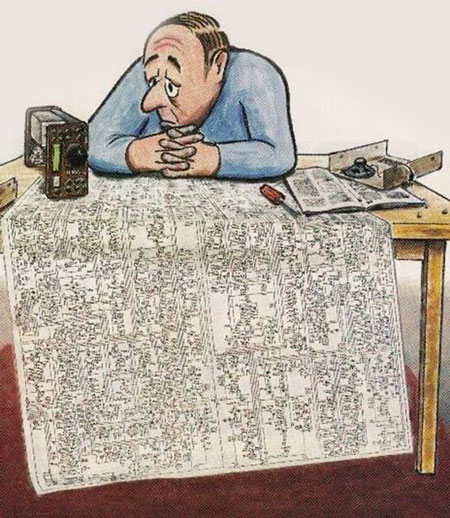
Feeling overwhelmed by the complexity of modern radio gear? Well, the same feeling apparently existed in 1919 when QST magazine ran an article explaining the mysterious new technology known as CW which, it was confident, would replace spark transmission. Read the article.
The annual Night of Nights at KPH San Francisco Radio begins at 0001Z on Thursday 13 July. This is a great opportunity to copy KPH (and also KSM) Morse transmissions on a range of HF frequencies. They always welcome signal reports, which you can send in radiogram form to K6KPH either during NoN or the following Sunday (NZ time) during their regular operations.
Encrypted (Enigma) transmissions are also planned from KPH on 22 July. Don’t have an Enigma machine? You can use a web-based emulator.
For information on both of these KPH events, and many other interesting items, I highly recommend the latest edition of the Maritime Radio Historical Society’s newsletter, as well as this handy frequency chart.
New on the net: Your net controllers have been brainstorming some ideas for new features on NZ Net – just to keep things interesting. We’ll be trialling a few of these in coming months and look forward to feedback – as well as other ideas which you may have. Feel free to contact the Net Manager with suggestions.
Photo flashback: 3 successful New Zealanders
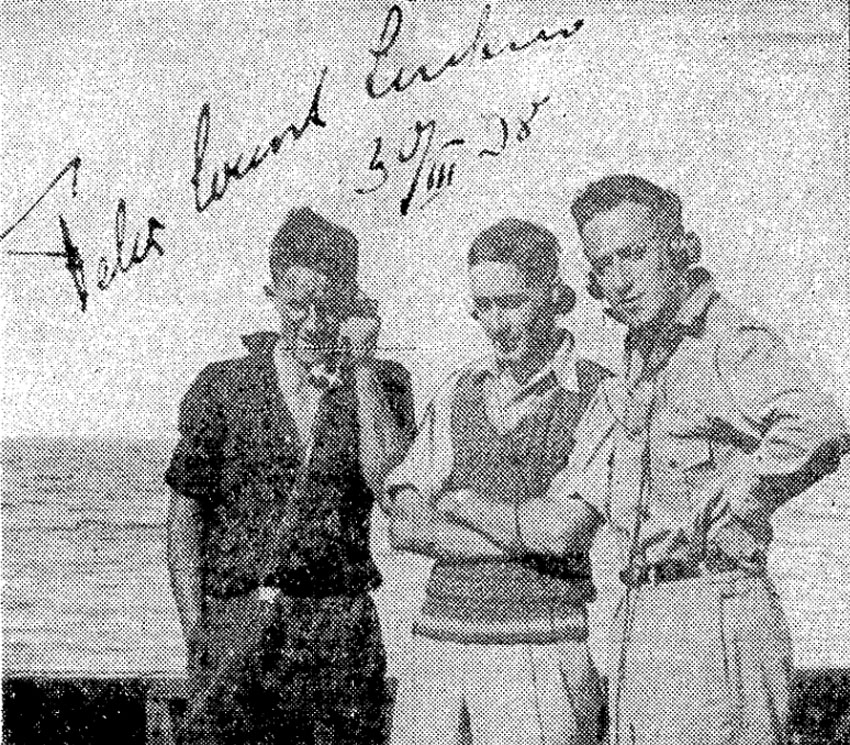
Three young New Zealand amateur radio enthusiasts whose training stood them in good stead. From the left, Messrs. William Young (later atomic bomb research assistant), Frank Scarrott, and John R Shirley, conducting experiments in a trawler off Napier in 1938. The photograph, taken by Mr KD McEwen, was subsequently autographed by Count Felix von Luckner. (Evening Post, 8 Sep 1945)
When William Young, then a Palmerston North Technical College boy, dropped into a radio shop in his home town, Feilding, in pre-war days and became interested in radio, little did he dream that eventually he was to become associated with research connected with one of the marvels of the age – the atomic bomb. With Frank Scarrott and John R Shirley, both Napier school boys, he was subsequently connected with successful high frequently [sic] radio tests when communication was established in 1938 between trawlers operating off Napier and the shore base.
The three boys were then members of the Palmerston North Radio Emergency Corps, which conducted the experiments. Radiotelephony was used, and the crews of the vessels were able to converse with workers on other trawlers many miles away, as well as with the base station at Napier. William Young later obtained a bursary that took him to Canterbury College, where he obtained his degree in electrical and mechanical engineering. At the outbreak of war, while still at the University, he entered the radio development laboratory of the Department of Scientific and Industrial Research, and was later sent to Canada, where he was among the research assistants engaged on the development of the atomic bomb.
Another of the three, John Shirley, toured North and South America before the war, spent some time in England, where he joined the Marconi Company, and, as a radio operator, served at sea. He was in England when war broke out. Returning to New Zealand early in 1940, he joined the Signals Section of the Army, secured a commission as lieutenant, and served in the Middle East with the New Zealanders. In Italy he was in charge of the group that captured the German commander, General von Alten, and his staff. Of late he has been engaged in the vicinity of Trieste, where he developed an electronic weapon for disrupting enemy communications. He now holds the rank of major.
The third member of the group, Frank Scarrott, served with the Field Artillery Signals, where he gained his commission as lieutenant, and twice visited the Pacific.
The success of these young men, and many other New Zealanders who obtained their initial scientific training in amateur radio, draws attention to the importance of the voluntary work carried out in the Dominion prior to the outbreak of war. When hostilities broke out all amateur radio organisations were disbanded. Many young people in various parts of the country are now looking forward to an early resumption of activities.
– Evening Post, 8 Sep 1945, p6
Sabotage at ham station
Grant ZL2GD is back on the air, with a temporary setup at least, after moving to his new home in Oxford. Although the new location seems to be great for radio, Grant says he has experienced deliberate interference.
“I really enjoy the SKN evenings and I was lucky to get my 80m dipole up just in time. Unfortunately, it only lasted two nights.
“When I was adding the 40m dipole to the mast I noticed that something had eaten into the RG8X feedline which was lying on the ground. We were expecting heavy rain, so down came the antenna.
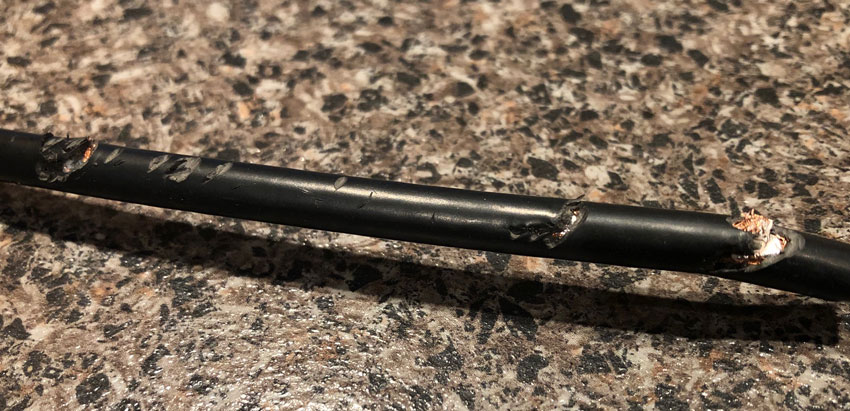
“I hope to find the necessary tools and connectors before too long so I can get the 80m antenna back up the mast. Still have not found all my bits and pieces…they are here somewhere.
“I’m currently using an end-fed half wave which works on 80-10m but it is noisy and not as good an antenna as the dedicated dipoles.”
So, what might have caused the damage to Grant’s coax?
“Not sure. Something with very sharp teeth. They went right into the center conductor. What ever it was it had about 20 attempts along a 500mm piece. It wasn’t any cattle, sheep or dogs and the coax was too big for mice. Maybe a hedgehog?”
Morse keys seized
If you are thinking of buying or selling a Morse key internationally, be aware that some keys are being seized as “restricted items.”
The following is one of a few similar messages which have appeared in Morse groups on Facebook in the past week:
So a Marconi 365 key that I paid a substantial sum of money for has been deemed “restricted” in the Global Shipping Programme. I’m informed that a full refund will be made but that it will not be shipped to me NOR returned to the seller. Anyone have any idea what’s going on here?
It was via eBay from a merchant in the UK to be shipped to Ireland. As the UK is no longer in the EU, often the best option is the “Global Shipping Programme”, which sets something like flat rates for import charges and duty globally, thereby bypassing payments when it arrives to its destination country … I saw a similar post about the same topic a few days ago in one of the other ham groups…
This is the main excerpt from the email:
“The item in question has been deemed restricted. This could be due to import/shipping restrictions or eligibility requirements within the Global Shipping Program. The item will not be shipped to you nor returned to your seller. Don’t worry! Your full refund will be processed back to the original payment method within 72 hours. You may notice two separate refunds; a refund for the item and a refund for the shipping and import costs. No further action is needed.”
Some amateurs are speculating that this is a scam to steal and sell valuable keys. Others reckon it’s a case of customs officials who have no idea what a Morse key is so simply decide to seize it. Whatever the cause, caution is advised!
Net numbers

NR43 R ZL1NZ 39/36 AUCKLAND 0900Z 3JUL23 = NZ NET = JUN QNI VK3DRQ 16 VK4PN 16 ZL1AJY 6 ZL1ANY 20 ZL1AYN 6 ZL1NZ 22 ZL1PX 14 ZL1RA 1 ZL2GD 7 ZL2GVA 20 ZL2KE 8 ZL2LN 4 ZL2TE 16 ZL2WT 9 ZL4KX 11 TOTAL 176 QTC 29 = ZL1NZ
ZL1AYN’s shack
Bob has been doing some house renovating and sent along a few photos of the reassembled shack. I immediately noticed that Bob has his pencil sharpened at both ends; no broken lead will slow him down! 🙂
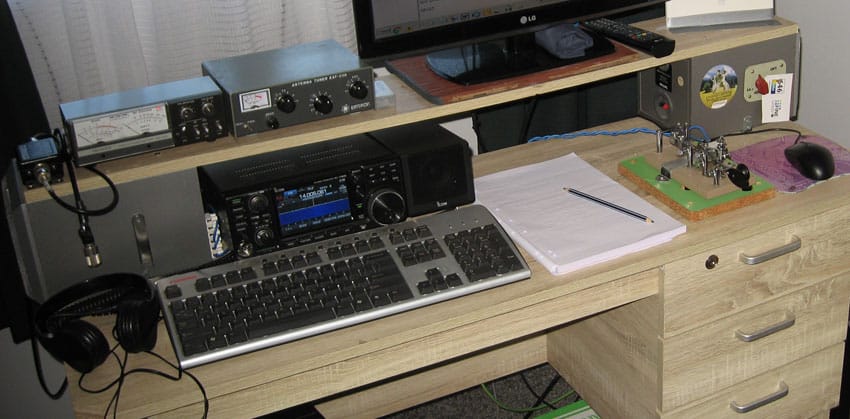

“The small key is very dear to me,” says Bob, “as I made my first QSO as G3TCN from our cottage in the Brecon Beacons where I lived with my young family back in 1963. We did not have mains electricity until late 1965 so I used a crystal controlled Radio Set 128 on loan from my unit to bring my morse speed up. The set used valves similar to those in the PYE portable radio running on four 65V batteries in series/parallel and a chunky 1.5V filament battery.”
Audio challenge
After that real head-scratcher in the last edition, I thought I’d better choose a simple bit of audio this time. All you have to do is identify the station by callsign and city.
Please send your answers via radiogram to ZL1NZ, or via email if no propagation.
Answer to previous Morse challenge
What was that eerie sound recorded on 80m in the UK – a sound which none of us were able to guess?
John G4ETQ reveals the answer:
“The recording was on 3615 at 08.30 on Saturday. That’s when the VMARS group (Vintage Military Amateur Radio Society) have their weekly net, comprising 30 or more stations running AM from vintage equipment.
“At exactly 08.30 the net controller gives 45 seconds for them all to tune their equipment up, instead of tuning over each other (or doubling).
“So that recording is the sound of many AM transmitters tuning up together. It happens every Saturday.”
Video
1990: MV Handy Carrier 9HJV2 receives QTC from Athinai (Athens) Radio SVA/SVF and the QSK really comes in handy (pun intended).
Advertising archive

Telegraph Age, 1909
Suggestions?
If you have suggestions on how to make the NZ Net better, or things you’d like to see covered in these updates, please contact ZL1NZ. You might even like to write something for the newsletter.
Thanks for reading, and I hope to hear you soon on the NZ Net!
—
Neil Sanderson ZL1NZ, Net Manager
New Zealand Net (NZ NET)
3535.0 kHz at 9pm NZT Mon-Fri




